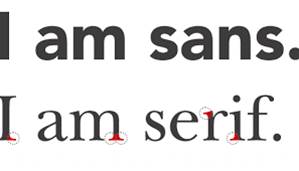Advertising and Marketing: Key conventions
Denotation: the literal meaning of something
Connotation: the deeper meaning or what is suggested (reading between the lines)Codes and conventions of print adverts
When studying print adverts we need to look for the following conventions or typical features:
- Picture of product
- USP - unique selling point. What is it that makes the product special or different to appeal to consumers?
- Lighting
- Setting / colour scheme
- Logo – this is usually the brand name
- Slogan – this is a catchy phrase summing up the ethos of the product e.g Nike’s ‘Just Do It’
Persuasive techniques in advertising
Advertisements are generally trying to persuade their target audience to:
- Buy a product or service
- Believe something or act in a certain way
- Agree with a point of view
There are many persuasive techniques used in advertising. A selection include:
- Image and colour scheme- to catch and keep attention
- Slogan – a catchy phrase or statement
- Established brand identity – associated with success or taste or good quality.
- Repetition – constant reference to product name
- Association / Star Power – e.g. celebrity endorsement
- Emotional appeal or shock tactics – designed to create strong feelings
- Expert opinion – ‘4 out of 5 dentists…’
- Imperative- Giving no choice e.g ‘Taste the rainbow’
Media analysis example - Maltesers advert
Conventions and analysis
- Pictures of the product (Maltesers) to remind us of the type of product it is. The image also reinforces the word ‘lighter’ as the chocolates dance and jump off the floor.
- The Logo is bright and large in the centre of the advert. The word ‘malt’ relates to the flavours used and ‘tesers’ is a play on the word ‘tease’ which ties in with the playful, light ethos.
- The Background features the heavy use of red. It is bright and eye-catching with connotations of love. This makes the consumer recognise the brand colour and makes them think they love the product, or may gift it to someone they love.
- The Slogan at the bottom is clearly visible and stands out against the background. ‘Lighter’ and ‘enjoy’ reinforce the USP – that Maltesers are slightly healthier or 'lighter' chocolate.
- The Colour Scheme is red and white - recognisable from the packets of Maltesers, creating a brand identity.
Introduction to advertising: blog task
Create a new blogpost called 'Advertising: Key conventions'. Look at this Skittles advert:
Part 1: Skittles advert analysis
1) What key conventions of print adverts can you find and what are the connotations or deeper meanings of each convention? For each convention, write about how it communicates meaning to the audience. See the Maltesers advert above for an example of how to do this. There is a picture of the product with bright overhead lighting which illuminates the logo on the packaging. The background also presents a picture of the product and takes advantage of its USP by utilising its bright colours to depict a rainbow, which might connotate that this advert is aimed towards children. The slogan beneath "Taste the rainbow"
2) What is the USP (unique selling point) for Skittles and how do you know? Does the advert use any of persuasive techniques listed above?
It's colourful and eye-catching which attracts younger audiences as it draws their attention to the product in the middle where the name and packaging is also present. It shows us pictures of the skittles themselves so we know what we're buying.
Look at the Maltesers example above if you are unsure how to complete these tasks.
Part 2: Advert research
Use Google images to research classic adverts. Find examples for the following and add them to your blog:
1) An advert with a clear brand identity
2) An advert that uses shock tactics or a controversial idea
3) An advert that creates a a strong emotional connection to the audience
Bonus: Can you find an advert that shows women or men in a way they don't normally appear (this is an example of representation in media - subverting the typical representation of gender. We will be studying this next week!)








Comments
Post a Comment